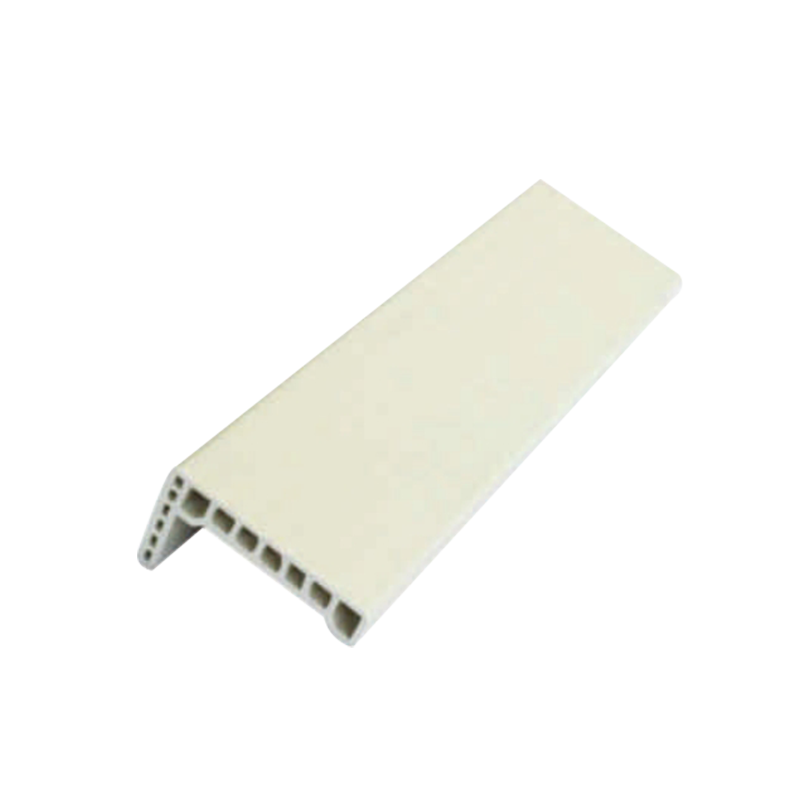WPC architrave, also known as wood-plastic composite architrave or polymer architrave, is a modern building material that has gained significant popularity in construction and interior design. It's an eco-friendly and highly functional alternative to traditional timber or MDF (medium-density fiberboard) architraves. These versatile moldings are used to frame doorways and windows, providing both aesthetic enhancement and practical benefits.
Composition and Manufacturing
WPC architrave is manufactured from a unique blend of wood fibers (often recycled), thermoplastics (such as PVC, PE, or PP), and various additives. The wood content typically ranges from 30% to 70%. This composite material undergoes a specialized extrusion process, where the mixture is heated and then pushed through a die to form the desired profile. This process creates a dense, uniform, and durable product that combines the best properties of both wood and plastic.
The additives play a crucial role in enhancing the performance of WPC. These can include:
-
Coupling agents: To improve the bond between wood fibers and plastic.
-
UV stabilizers: To protect against degradation from sunlight, especially for exterior applications.
-
Pigments: For color consistency and aesthetic appeal.
-
Foaming agents: To reduce density and improve insulation properties (in some specific types).
-
Lubricants: To aid in the manufacturing process.
Purpose of WPC Architrave
The primary purpose of WPC architrave, like its traditional counterparts, is both decorative and functional.
Decorative Purpose
Aesthetically, architraves serve as a finishing trim that frames openings, creating a clean and polished transition between the wall and the door or window frame. They add architectural detail, depth, and character to a room. WPC architraves come in a wide range of profiles and finishes, mimicking the look of natural wood or offering contemporary designs. Their consistent finish and ability to be painted or laminated make them highly adaptable to various interior styles, from classic to modern. They effectively conceal the small gaps and imperfections that often exist where door or window frames meet the wall, providing a seamless and refined appearance.

Functional Purpose
Beyond aesthetics, WPC architraves offer several practical advantages:
-
Concealment: They effectively cover the unsightly gaps, joints, and unfinished edges between door/window frames and the surrounding wall, providing a neat and tidy finish.
-
Protection: They act as a protective barrier for the edges of plasterwork or drywall around openings, preventing chipping and damage from everyday wear and tear, such as impacts from vacuum cleaners or furniture.
-
Durability and Longevity: Unlike traditional wood, WPC architrave is inherently resistant to moisture, rot, warping, and insect infestation. This makes it an excellent choice for areas prone to humidity, such as bathrooms, kitchens, or basements, where timber architraves might swell, crack, or mold.
-
Low Maintenance: WPC architraves do not require regular painting, sealing, or staining. They can be easily cleaned with soap and water, maintaining their appearance over a long period.
-
Stability: The composite nature of WPC provides excellent dimensional stability, meaning it is less likely to expand or contract with changes in temperature or humidity, thus preventing common issues like cracking or splitting often seen in solid wood.
-
Sustainability: Utilizing recycled wood fibers and plastics, WPC contributes to sustainable building practices by reducing waste and the demand for virgin timber.
-
Ease of Installation: WPC architrave is typically lightweight and can be cut, drilled, and fixed using standard woodworking tools, making installation straightforward for professionals and DIY enthusiasts alike. It can be nailed, glued, or screwed into place.
Applications
WPC architraves are versatile and can be used in a variety of settings, including:
-
Residential homes: For door and window trims in living rooms, bedrooms, bathrooms, and kitchens.
-
Commercial buildings: In offices, retail spaces, and hotels due to their durability and low maintenance.
-
High-humidity environments: Such as bathrooms, laundries, and even some exterior applications where moisture resistance is critical.
-
Renovation projects: As a durable and long-lasting replacement for old or damaged architraves.
In conclusion, WPC architrave (or wood-plastic composite architrave) is a high-performance building material that seamlessly blends the aesthetic appeal of wood with the durability and low maintenance of plastic. Its resistance to moisture, rot, and insects, coupled with its ease of installation and eco-friendly composition, makes it an increasingly preferred choice for modern construction and interior finishing, offering a long-lasting and attractive solution for framing doors and windows.







